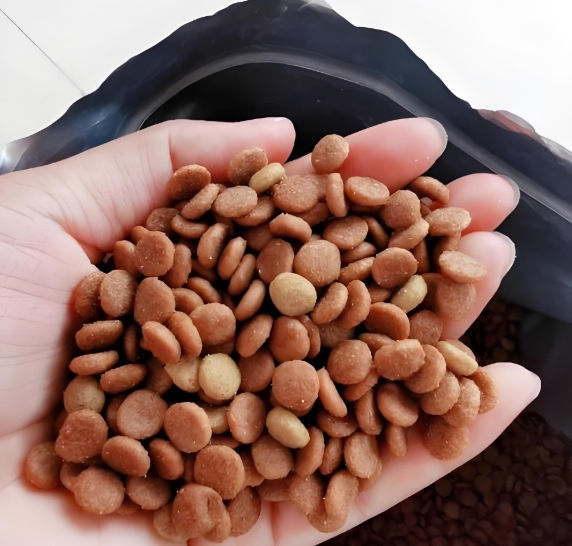Formulación de alimentos de gama alta para perros: Guía para una nutrición de primera
Creating a high-end dog food formula requires a scientific approach, a deep understanding of canine nutrition, and a commitment to quality ingredients. This guide outlines the key principles and steps involved in developing a premium recipe that promotes optimal health and well-being for dogs.
1. Foundational Principles of Canine Nutrition
Before formulating, it’s essential to understand a dog’s core dietary needs:
- Proteins: The building blocks for muscles, organs, and immune function. High-end formulas prioritize high-quality, animal-based proteins (e.g., deboned chicken, salmon, lamb).
- Grasas: A concentrated source of energy that supports skin, coat health, and brain function. Look for named sources like chicken fat, salmon oil, or flaxseed.
- Hidratos de carbono: While not strictly essential, they provide energy and fiber. Premium formulas use digestible, nutrient-rich carbs like sweet potatoes, peas, and chickpeas instead of cheap fillers like corn or wheat.
- Vitamins and Minerals: Crucial for metabolic functions, bone health, and more. These must be carefully balanced.
- Agua: The most critical nutrient.
2. Ingredient Selection: The Cornerstone of Quality
The quality of ingredients is what truly defines a high-end product.
- Named Protein Sources: Use specific, high-quality animal proteins as the first ingredient (e.g., “deboned chicken,” “salmon,” “lamb meal”). Avoid vague terms like “meat meal” or “animal by-products.”
- Whole Foods: Incorporate whole vegetables, fruits, and superfoods (e.g., blueberries, spinach, pumpkin, kelp) for their natural vitamin, mineral, and antioxidant content.
- Healthy Fats: Include sources of Omega-3 and Omega-6 fatty acids like fish oil (for EPA and DHA) and flaxseed to reduce inflammation and promote a shiny coat.
- Natural Preservation: Use mixed tocopherols (a form of Vitamin E) and rosemary extract as natural preservatives instead of artificial chemicals like BHA, BHT, or ethoxyquin.
3. The Formulation Process: A Step-by-Step Approach
Step 1: Define the Target
Identify the specific life stage, breed size, or health need the formula is for (e.g., senior dogs, large breed puppies, active adults, weight management). This determines the nutrient ratios.
Step 2: Establish Nutritional Goals
Align your formula with the nutrient profiles established by the Association of American Feed Control Officials (AAFCO). This ensures the diet is “complete and balanced” for the intended life stage.
Step 3: Protein and Fat Calculation
- Aim for a high protein content (often 25-35%+ on a dry matter basis) from animal sources.
- Set fat levels (typically 12-18%) based on the energy needs of the target dog.
Step 4: Carbohydrate and Fiber Selection
Choose low-glycemic, complex carbohydrates for sustained energy. Ensure adequate fiber (from sources like beet pulp or chicory root) for digestive health.
Step 5: Micronutrient Balancing
This is the most complex step. Use a nutritional formulation software to calculate the levels of essential vitamins (A, D, E, etc.) and minerals (calcium, phosphorus, zinc, etc.). The calcium-to-phosphorus ratio (ideally between 1:1 and 2:1) is critically important.
Step 6: Functional Additives
Consider including proven functional ingredients:
- Probiotics and Prebiotics: For gut health and immune support.
- Glucosamine and Chondroitin: For joint health, especially in large breeds.
- Chelated Minerals: These are minerals bound to proteins, making them easier for the body to absorb.
4. Key Considerations and Best Practices
- Palatability: The most nutritious food is useless if a dog won’t eat it. High-quality proteins and fats naturally enhance palatability.
- Digestibility: Premium foods have high digestibility (80%+), meaning more nutrients are absorbed and less waste is produced.
- Avoid Common Allergens: Many high-end formulas are grain-free or feature novel proteins (like duck or venison) to cater to dogs with food sensitivities. However, it’s important to note that grains like oats and barley are nutritious for most dogs.
- Sourcing and Safety: Implement rigorous quality control checks on all incoming ingredients. Partner with trusted suppliers and conduct regular testing for contaminants.
5. Testing and Validation
Formulating is not complete without testing.
- Laboratory Analysis: Send samples to an independent lab to verify the nutrient content matches your formulation.
- Feeding Trials: The gold standard for validation is conducting AAFCO-approved feeding trials to ensure the food supports health over time.
- Palatability Tests: Conduct tests to ensure dogs prefer your product over competitors.
Conclusion: Beyond the Formula
Formulating high-end dog food is a blend of science and art. It requires a unwavering focus on ingredient integrity, precise nutritional balance, and rigorous testing. While this guide provides a framework, successful commercial formulation is typically done by professional pet nutritionists in state-of-the-art facilities to ensure safety, efficacy, and compliance with all regulations. The ultimate goal is to create a diet that not only meets a dog’s biological needs but also contributes to a longer, healthier, and more vibrant life.








